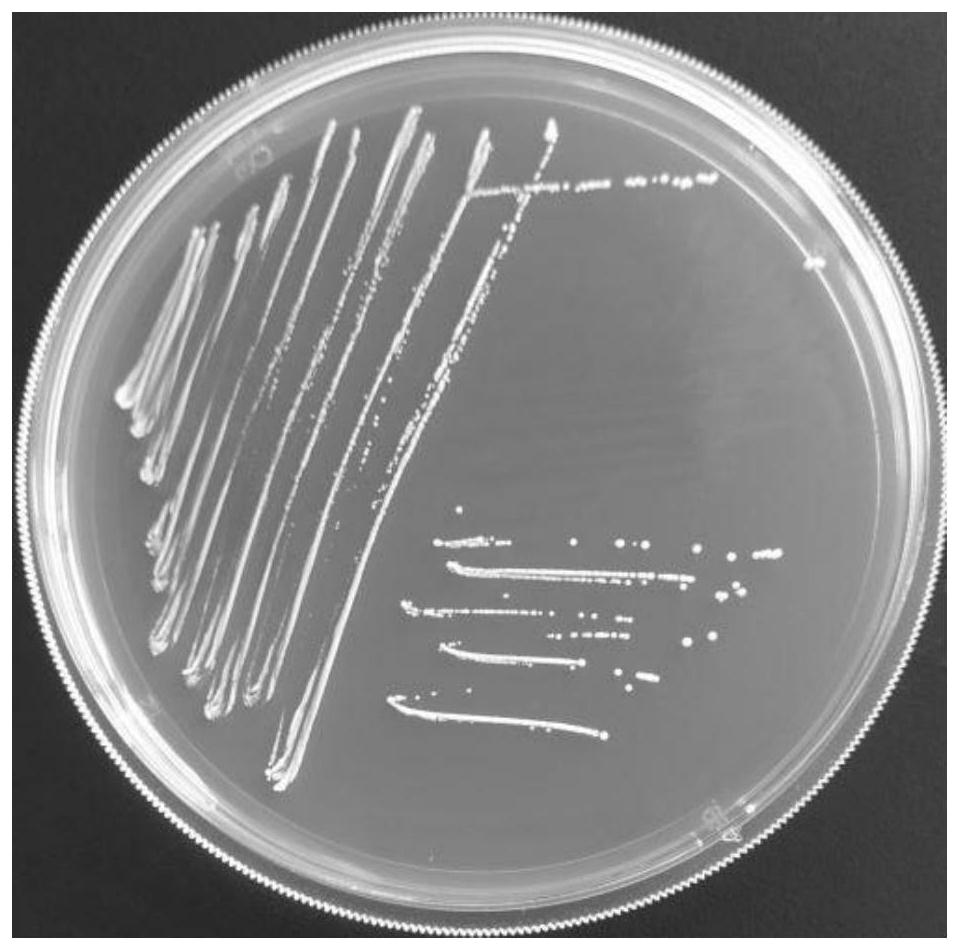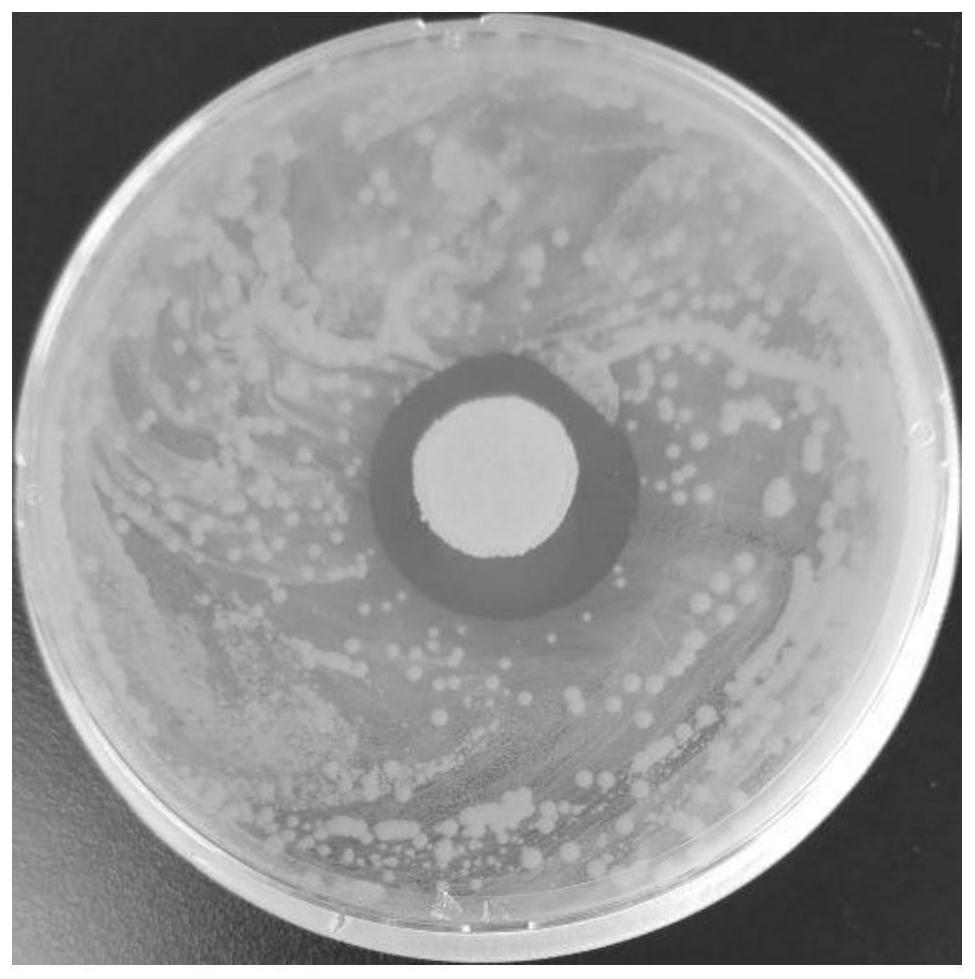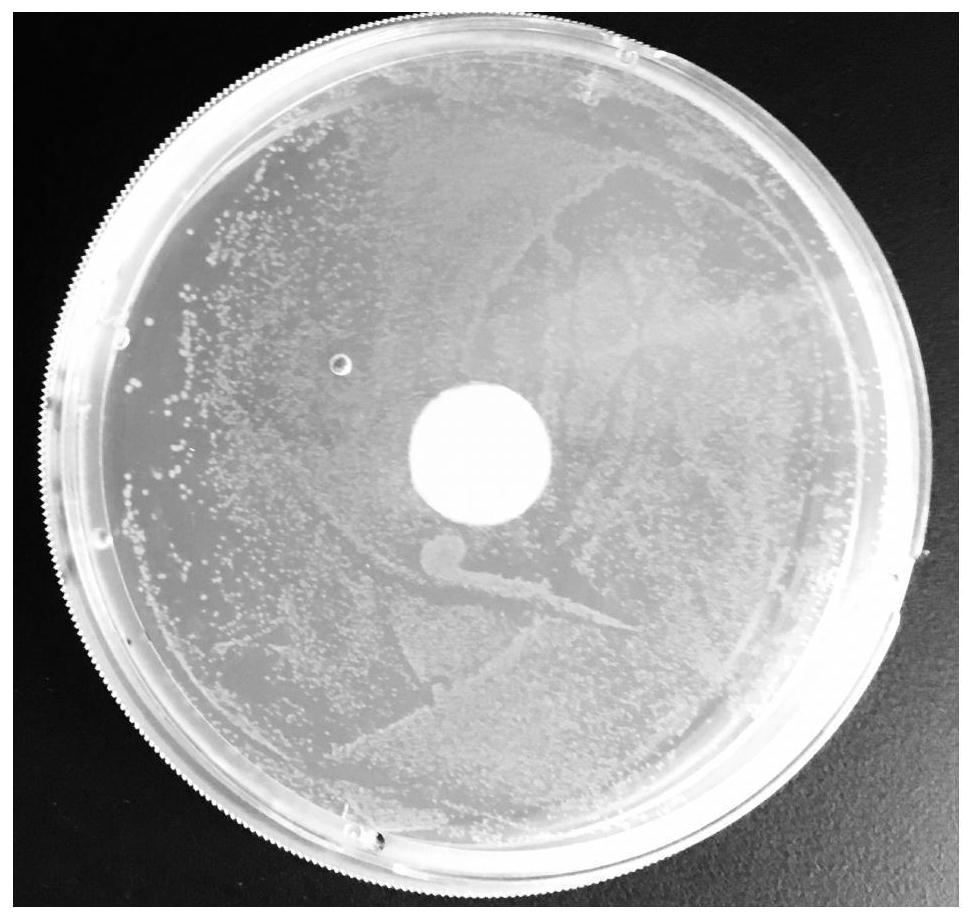Lactobacillus plantarum SLB01 with inhibiting effect on enterobacter cloacae as well as derivative product and application of lactobacillus plantarum SLB01
A technology of Lactobacillus plantarum and Enterobacter cloacae, applied in the field of microbiology, can solve problems such as hidden health problems
- Summary
- Abstract
- Description
- Claims
- Application Information
AI Technical Summary
Problems solved by technology
Method used
Image
Examples
Embodiment 1
[0033] Lactobacillus plantarum SLB01 was screened from feces samples of healthy and long-lived elderly in Guangxi. Specifically, the screening and identification methods of the Lactobacillus plantarum SLB01 are as follows:
[0034] 1) Weigh 1.0 g of fresh feces sample and add it to 9.0 mL of sterile saline, shake and mix evenly to make a bacterial suspension. Take 5mL of the above bacterial suspension and add it to 45mL enrichment medium, and incubate anaerobically at 37°C for 7 days. The enrichment medium formula is: tryptone 10.0g, beef heart extract powder 9g, beef powder 4.0g, yeast powder 2.0g, glucose 11.0g, sodium chloride 2.5g, disodium hydrogen phosphate 1.5g, dipotassium hydrogen phosphate 1.0 g. Diammonium hydrogen citrate 1.0g, sodium acetate 2.5g, magnesium sulfate 0.1g, manganese sulfate 0.02g, Tween 801.0g, distilled water 1000mL, pH value 6.5, sterilize at 115°C for 20min.
[0035] 2) Gradually dilute the cultured enriched culture solution with sterile physio...
Embodiment 2
[0040] In vitro inhibition experiment of Enterobacter cloacae
[0041] Method 1: Plate antibacterial test
[0042] Enter Enterobacter cloacae into MRS liquid medium, activate anaerobic culture at 37°C to a concentration of 1×10 8 CFU / ml. Take 0.1ml of Enterobacter cloacae bacteria liquid in a sterile plate, quantitatively pour 14ml of MRS solid medium at a temperature of 40°C, mix the medium and the bacteria liquid evenly, let the plate solidify, and prepare the Enterobacter cloacae plate .
[0043] The strain to be tested was inserted into the MRS liquid medium and cultured anaerobically at 37°C for 48h. Centrifuge to remove the supernatant. Use sterile tweezers to soak the sterile circular filter paper in the supernatant for a while, take it out, stick the filter paper to the center of the Enterobacter cloacae plate, and cover it. Incubate the plate anaerobically at 37°C for 48 hours, observe whether there is a bacteriostatic zone around the filter paper sheet, and meas...
Embodiment 3
[0052] acid and bile salt test
[0053] Bacterial suspension preparation: transfer and activate the bacterial strain from the preserved slant twice, wash the bacterial body from the slanted surface with sterile saline to prepare a bacterial suspension, and adjust the concentration of the bacterial suspension to 1×10 9 CFU / ml.
[0054] Acid resistance test: Experimental group: Take 0.1ml of the bacterial suspension and add it to 2mL of phosphate buffer with a pH value of 3.0, and incubate anaerobically at 37°C for 3 hours; after the culture is completed, the bacterial solution is serially diluted and spread on the MRS plate for plate counting. Control group: Phosphate buffer with a pH value of 3.0 was replaced with sterile physiological saline, and the rest of the operations were the same. Survival was calculated according to Formula I.
[0055] Survival rate=(experimental group plate colony number / control group plate colony number)×100% formula I
[0056] Acid-resistant and...
PUM
| Property | Measurement | Unit |
|---|---|---|
| Diameter | aaaaa | aaaaa |
Abstract
Description
Claims
Application Information
 Login to View More
Login to View More - R&D
- Intellectual Property
- Life Sciences
- Materials
- Tech Scout
- Unparalleled Data Quality
- Higher Quality Content
- 60% Fewer Hallucinations
Browse by: Latest US Patents, China's latest patents, Technical Efficacy Thesaurus, Application Domain, Technology Topic, Popular Technical Reports.
© 2025 PatSnap. All rights reserved.Legal|Privacy policy|Modern Slavery Act Transparency Statement|Sitemap|About US| Contact US: help@patsnap.com



